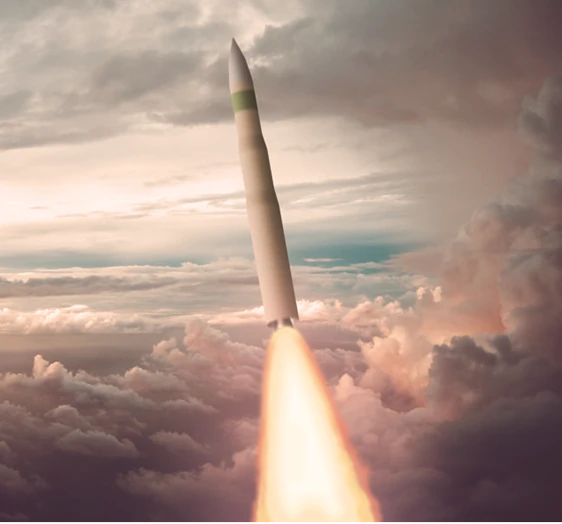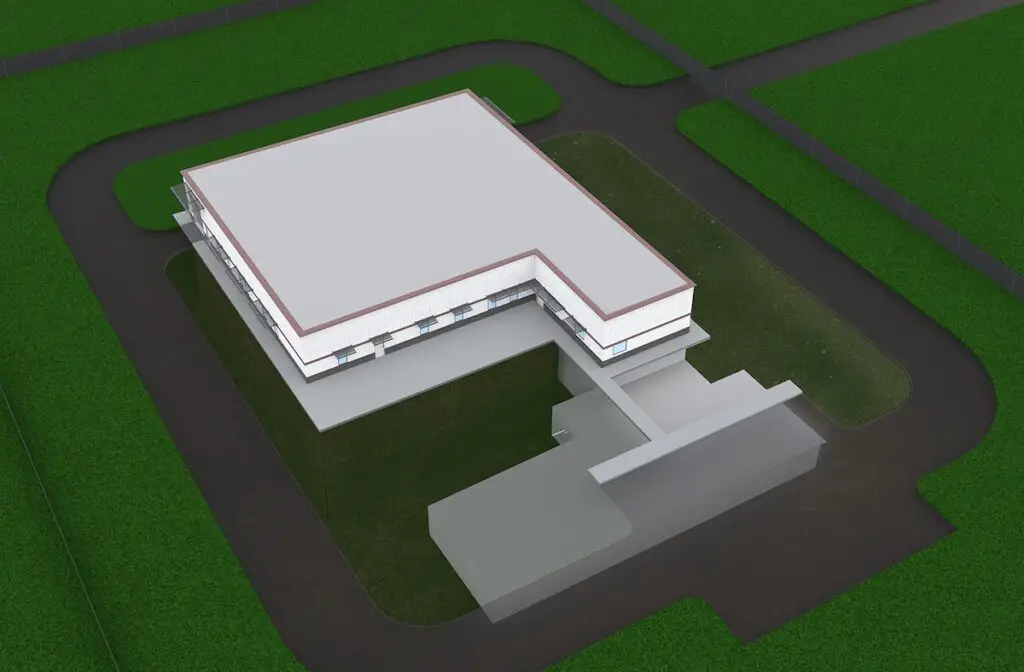The Americans have announced the official name of the new Intercontinental Ballistic Missile (ICBM) developed under the GBSD (Ground-Based Strategic Deterrent) program. The current ICBM LGM-30G Minuteman III successor will bear the name LGM-35A Sentinel.
The development and deployment of the new LGB-35A Sentinel ICBMs ensure the continuity of U.S. nuclear strategic deterrence. According to the U.S. Air Force, the development and introduction of new missiles is a cheaper solution than the modernization of 50-year-old missiles Minuteman III.
Northrop Grumman is the developer and manufacturer of these missiles.
The Minuteman III missiles entered service in 1970, and at the height of the Cold War in the 1970s, the Americans had 1,000 of them in service. Today, about 400 missiles remain active.
Minuteman III has an estimated range of 14,000 kilometres and a flight altitude of up to 1,000 kilometres above the Earth’s surface. Minuteman III will deliver either a separately guided nuclear warhead W78 (350 kt) or a warhead W87 (300 kt) to the target. Under the Strategic Arms Reduction Agreement (New START), each US ICBM carries one warhead, but the can be increased to three warheads if necessary.
Earlier, the U.S considered cannibalizing half of the Minuteman III missiles and maintaining the remaining 200 until 2050. However, given the growing nuclear ambitions of Russia and China, Washington decided to keep the ground part of the nuclear triad in full.
U.S. Air Force Secretary Frank Kendall commenting on the choice of the name Sentinel, said, “All this time, the Air Force was on guard; it was always alert and ready. The name Sentinel is a recognition of the mindset that thousands of pilots, past and present, have brought into the mission of deterrence and will serve as a reminder of the discipline and responsibility of their duty for those who will operate, secure and maintain the system in the future.”
A key feature of the Sentinel is the use of mature technologies – the Air Force intends to use already developed and tested solutions, technologies and components. In layman’s terms, the Air Force will not develop, for example, a “miracle” new rocket engine or exotic construction materials for the Sentinel.
Another element is modularity, which in the future allows easy modernization and the replacement of components (or services) from manufacturers, which, for example, may no longer exist in 20 or 30 years. After all, for this reason, it is so difficult to operate 50-year-old Minuteman III missiles and therefore considered for cannibalization.
Modularity applies to the missile carrier, ground service infrastructure, and nuclear warhead. At the same time, the Sentinel is easier to maintain than the Minuteman III, which reduces operating costs.

The total cost, including the development and production of ICBM missiles, modernization and reconstruction of the entire operational and service ecosystem of the ground part of the U.S. nuclear triad, is estimated at $ 100 billion.
The new ICBM will carry an unknown number of independently guided W87-1 nuclear warheads with a force of 475 kT. The missile will be launched not only from underground facilities but also from mobile launch systems in the future.
As per the current plans, the Sentinel will reach initial operational capability in 2029 and remain in service after 2070. The Sentinel will gradually replace the Minuteman III missiles at Francis E. Warren in Wyoming, Malmstrom in Montana and Minot in North Dakota. All American ICBMs are on these bases.
The missiles will be subordinated to the Air Force Global Strike Command (AFGSC), which serves the ICBM and U.S. strategic bombers.

“We need a capable next-generation Sentinel ICBM. Nuclear deterrence is a central element of our defensive position and is more important today than ever before. This system will be a highly resilient and capable deterrent that will bring us and our allies global stability for the next decade, “ said General Anthony Cotton, commander of the AFGSC.
The United States military is now working to rebuild its entire strategic nuclear triad ambitiously. It has imagined the future of the ground part of the triad. In the coming decades, the air part will rely on B-21 Raider bombers and new nuclear missiles with a flat flight path, AGM-181 LRSO (Long Range Stand Off Weapon).
The Americans will buy up to 1,000 missiles with an estimated range of 2,400 kilometres. The LRSO envisages a 150 kT W80-4 nuclear warhead.
The naval part of the triad will consist of 12 new Columbia-class nuclear submarines, each carrying 16 UGM-133A Trident II submarine launched ballistic missiles (SLBM).
Trident II can hold up to eight W88 warheads (8 × 475 kt), fourteen W76-1 (14 × 90 kt) and 76-2 (14 × 5-7 kt). In practice, each missile carries an average of four warheads due to the limitations of the New START agreement. The exact range is classified, but according to the weight of the cargo, it is estimated at 7,500 kilometres (with a full load of warheads) to 13,500 kilometres (three warheads).
Overall, the modernization of the U.S. nuclear triad is expected to cost $ 1.2 trillion by 2050. But it is only an estimate. In addition, Washington is modernizing carriers and warheads and large ground infrastructure (nuclear research laboratories, nuclear fuel production, nuclear warheads, etc.) and introducing new warning sensors SBIRS (Space-Based Infrared System). It also envisages the construction of state-of-the-art command and control systems for the United States’ defense against a nuclear strike.
